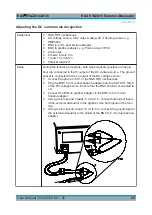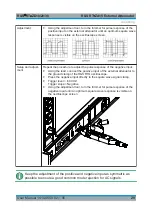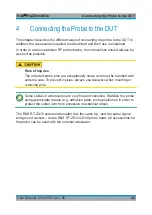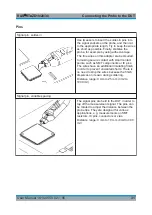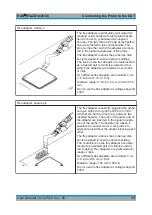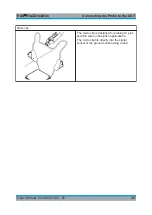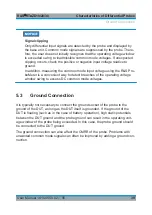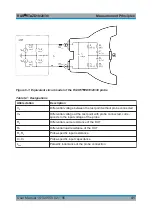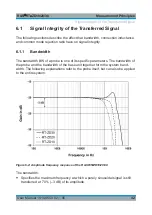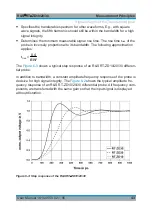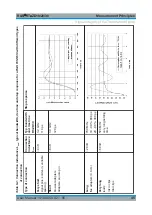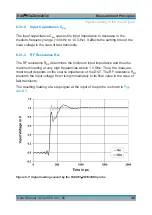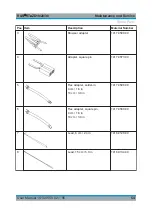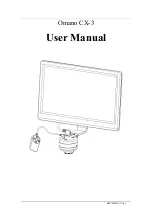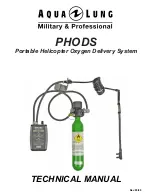
Characteristics of Differential Probes
R&S
®
RT
‑
ZD10/20/30
39
User Manual 1410.4550.02 ─ 05
Signal clipping
Only differential input signals are detected by the probe and displayed by
the base unit. Common mode signals are suppressed by the probe. There-
fore, the user does not initially recognize that the operating voltage window
is exceeded owing to inadmissible common mode voltages. If unexpected
clipping occurs, check the positive or negative input voltage relative to
ground.
In addition, measuring the common mode input voltage using the R&S Pro-
beMeter is a convenient way to detect breaches of the operating voltage
window owing to excess DC common mode voltages.
5.3
Ground Connection
It is typically not necessary to connect the ground socket of the probe to the
ground of the DUT, as long as the DUT itself is grounded. If the ground of the
DUT is floating (such as in the case of battery operation), high static potentials
between the DUT ground and the probe ground can result in the operating volt-
age window of the probe being exceeded. In this case, the probe ground should
be connected to the DUT ground.
The ground connection can also affect the CMRR of the probe. Problems with
unwanted common mode signals can often be improved by adding a ground con-
nection.
Ground Connection


